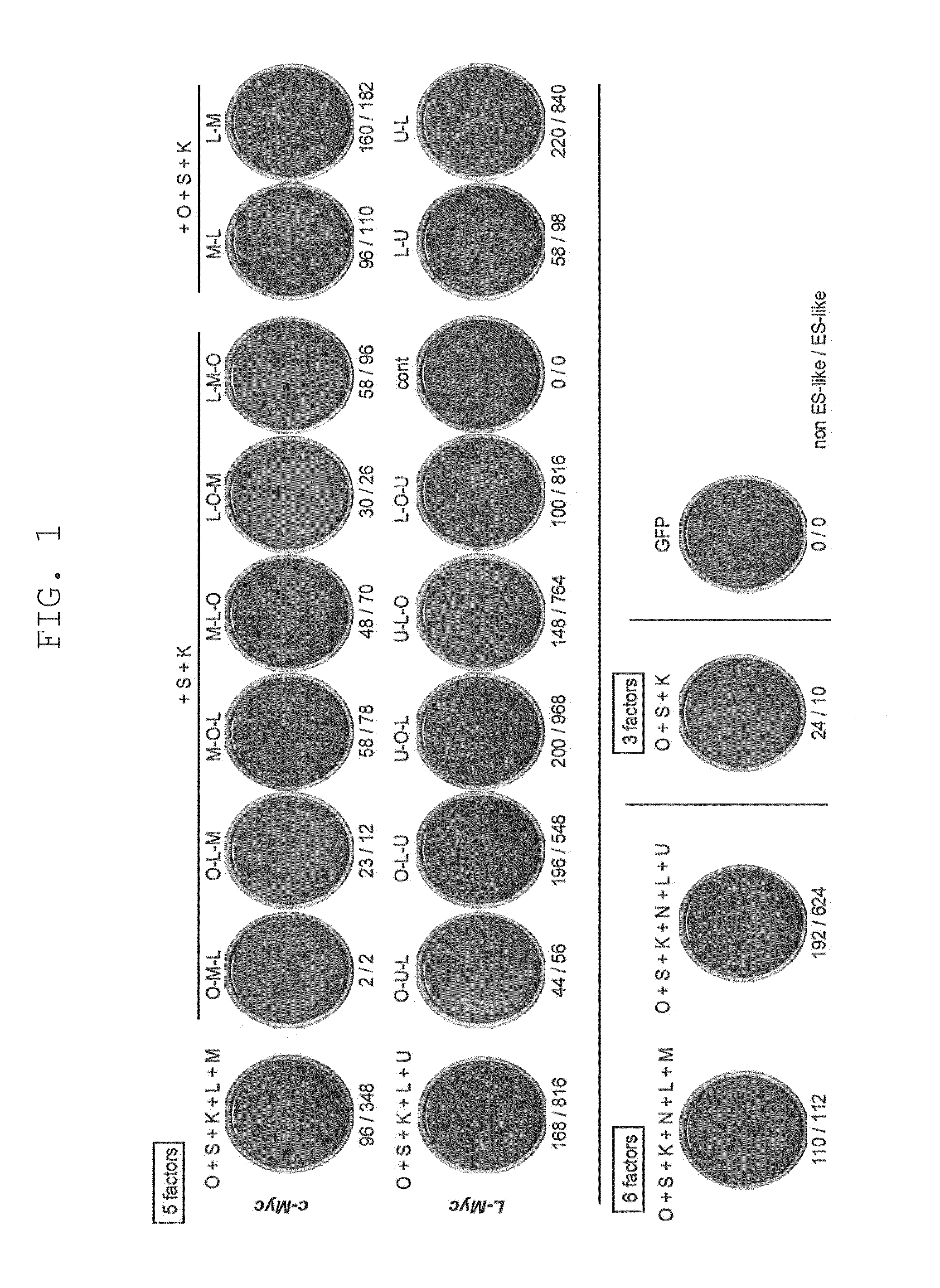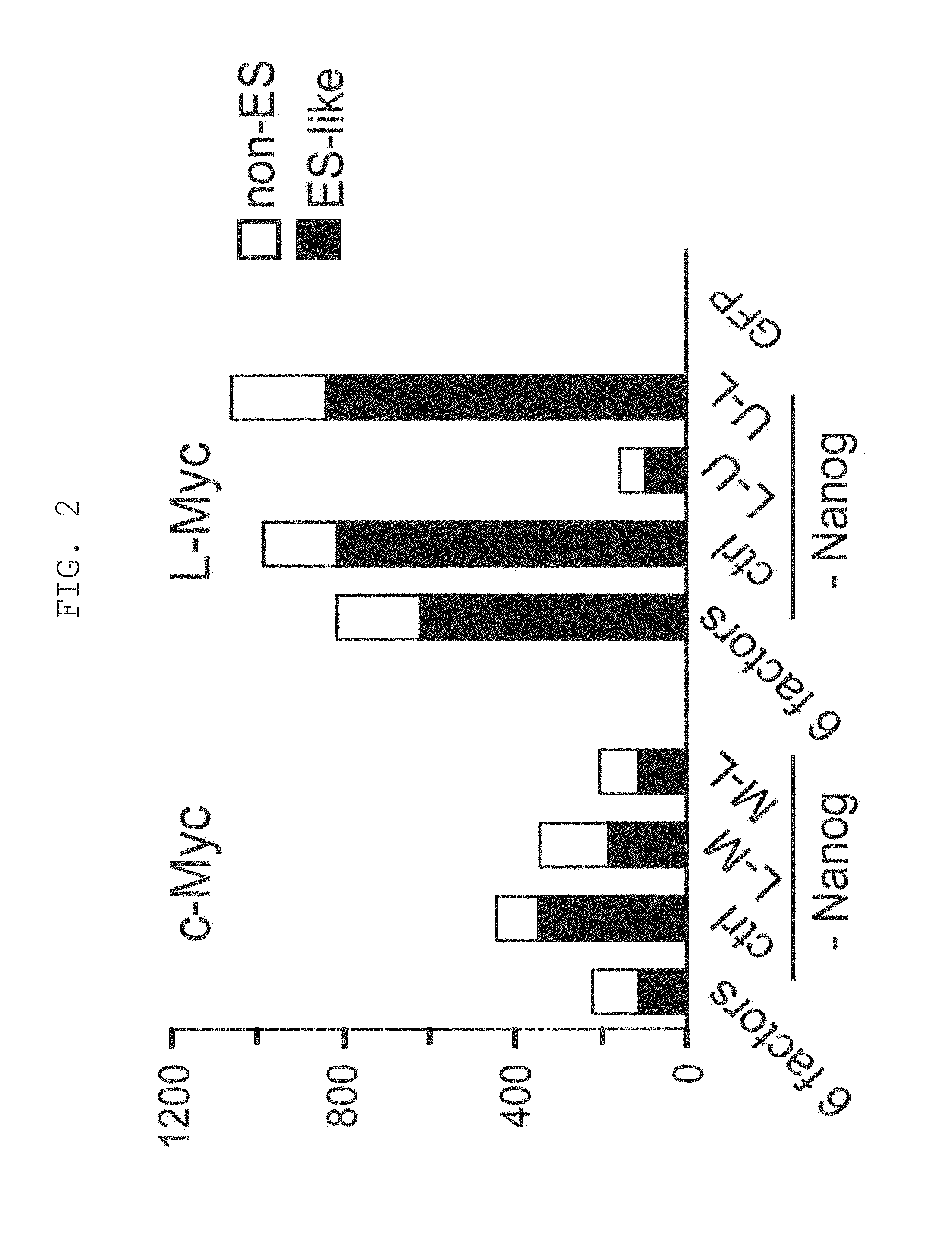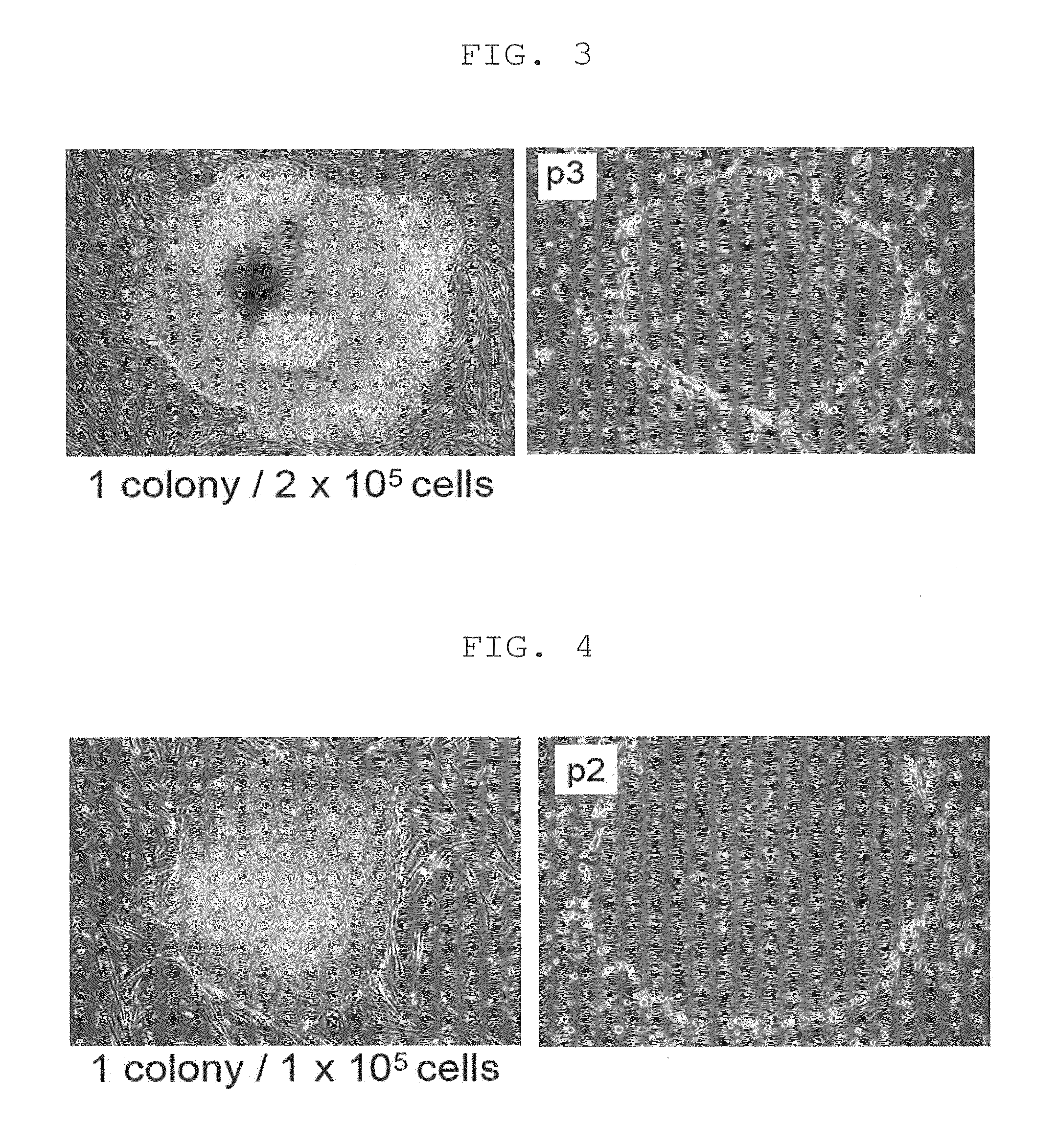Method of producing induced pluripotent stem cells using inhibitors of P53
a technology of induced pluripotent stem cells and inhibitors, which is applied in the direction of genetically modified cells, biocide, skeletal/connective tissue cells, etc., can solve the problems of low ips cell establishment efficiency at less than 1%, tumorigenesis in tissues or individuals, etc., to achieve efficient production of ips cells, improve the establishment efficiency of ips cells, and establish safe human ips cells.
- Summary
- Abstract
- Description
- Claims
- Application Information
AI Technical Summary
Benefits of technology
Problems solved by technology
Method used
Image
Examples
example 1
Establishment of Human iPS Cells Using Retroviruses
[0153]Retroviruses for reprogramming were prepared on the basis m of the pMXs plasmid and Plat-E packaging cells [supplied by Dr. Toshio Kitamura at the University of Tokyo; Morita, S. et al., Gene Ther. 7, 1063-1066 (2000)]. Various constructs were inserted into the multicloning site of pMXs to yield retroviral vectors to be used for reprogramming. The constructs inserted were prepared by joining human Oct3 / 4 (O in FIG. 1), human Sox2 (S in FIG. 1), human Klf4 (K in FIG. 1), human c-Myc (M in FIG. 1), human Lin28 (L in FIG. 1), human Nanog (N in FIG. 1), and human L-Myc (U in FIG. 1), and the translated region of each gene via the 2A sequence of foot-and-mouth disease virus [in FIG. 1, symbols for respective genes (shown above) are hyphenated (e.g., O-M-L)]. GFP was used as a negative control.
[0154]Each retrovirus for reprogramming was prepared by transferring each of the aforementioned retroviral vectors to Plat-E cells that had b...
example 2
Establishment of Human iPS Cells Using Episomal Plasmids (1)
[0157]A plasmid for reprogramming was prepared on the basis of pCX-EGFP (supplied by Dr. Masaru Okabe at Osaka University; FEBS Letters, 407, 313-319, 1997). First, the woodchuck hepatitis virus posttranscriptional regulatory element (WPRE) sequence was inserted downstream of EGFP. A cassette for replicating this vector in the cell was prepared by inserting a loxP sequence into both ends of the EBNA-1 of pCEP4 (Invitrogen). This cassette containing the EBNA-1 and oriP was integrated into the BamHI site of the aforementioned pCX-EGFP incorporating the WPRE, and this was named pCXLE-EGFP. This pCXLE-EGFP was treated with EcoRI, and various constructs, in place of EGFP, were inserted to yield plasmids for reprogramming. The five constructs inserted were: 1) human Oct3 / 4, 2) a construct prepared by joining the translated regions of human Sox2 and human Klf4 via the 2A sequence of foot-and-mouth disease virus, 3) a construct pre...
example 3
Establishment of Human iPS Cells Using Episomal Plasmids (2)
[0159]Four different plasmids, other than pCX-SV40LT, which was used in Example 2, were used for reprogramming: pCXLE-hOct4, pCXLE-hSK, pCXLE-hKSO, and pCXLE-hMLN.
[0160]In the experiments, a fibroblast established from a facial skin from a 36-year-old Caucasian female (Cell Applications, Lot1388) was used. This fibroblast was cultured and maintained at 37° C. in the presence of 5% CO2 in a 100 mm culture dish using DMEM / 10% FCS [a culture broth prepared by adding 10% fetal bovine serum to DMEM (Nacalai Tesque)]. At the time of plasmid transfer, the medium was removed, and the cells were washed by the addition of 5 mL of PBS. After removing the PBS, 0.25% Trypsin / 1 mM EDTA (Invitrogen) was added, and a reaction was carried out at 37° C. for about 5 minutes. After the cells rose, DMEM / 10% FCS was added to suspend the cells, and 6×105 cells were recovered in a 15 mL centrifugal tube. The suspension was centrifuged at 800 rpm f...
PUM
| Property | Measurement | Unit |
|---|---|---|
| temperature | aaaaa | aaaaa |
| diameter | aaaaa | aaaaa |
| time | aaaaa | aaaaa |
Abstract
Description
Claims
Application Information
 Login to View More
Login to View More - R&D
- Intellectual Property
- Life Sciences
- Materials
- Tech Scout
- Unparalleled Data Quality
- Higher Quality Content
- 60% Fewer Hallucinations
Browse by: Latest US Patents, China's latest patents, Technical Efficacy Thesaurus, Application Domain, Technology Topic, Popular Technical Reports.
© 2025 PatSnap. All rights reserved.Legal|Privacy policy|Modern Slavery Act Transparency Statement|Sitemap|About US| Contact US: help@patsnap.com



